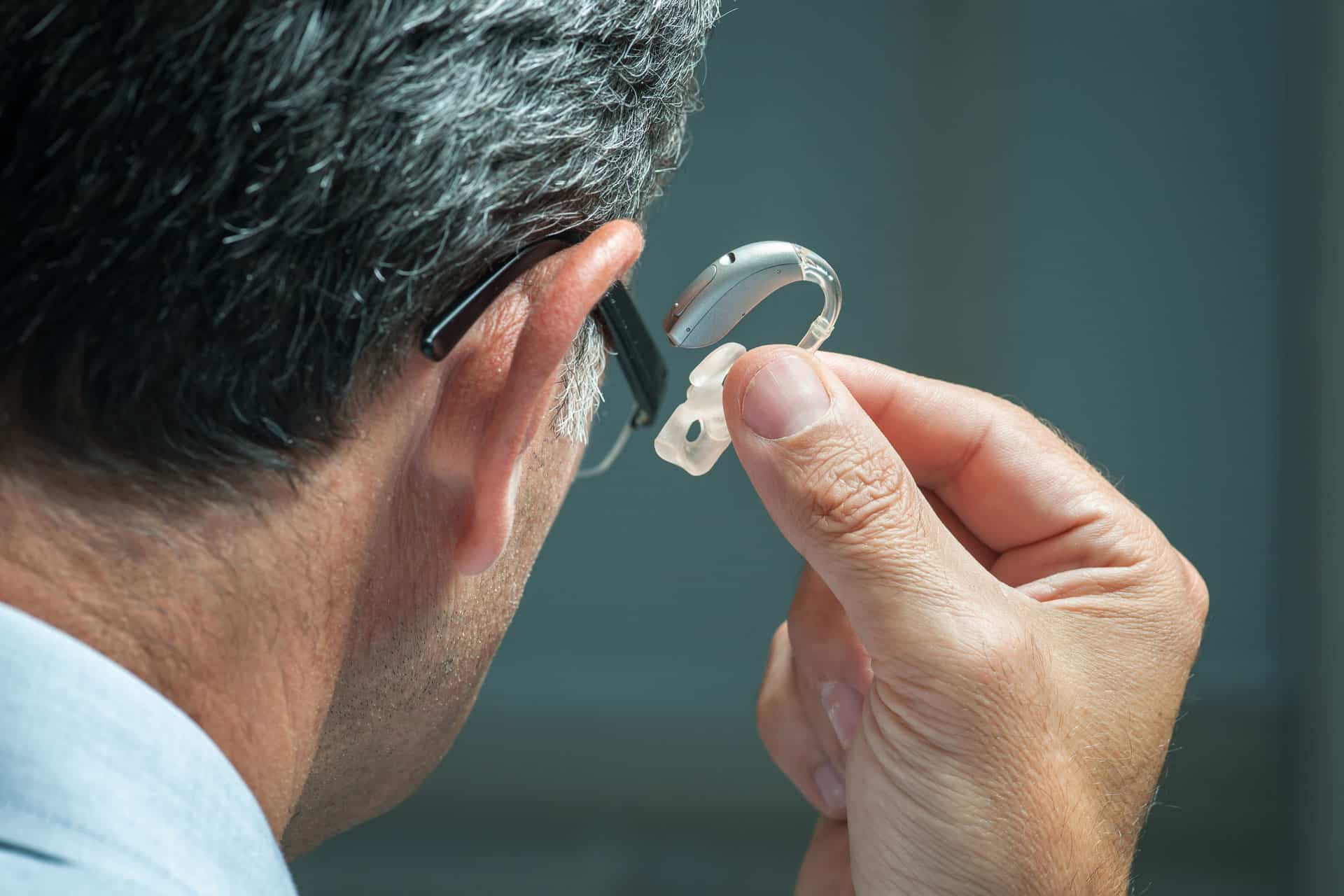Delivery in 2-3 working days
Phones for the hearing impaired: how they make everyday life easier for people with hearing problems
People who suffer from hearing loss face particular difficulties in everyday life. For example, talking on the phone can become an obstacle as the person on the other end of the line cannot be understood or can only be understood poorly. This in turn can lead to misunderstandings and make communication more difficult. Special telephones for the hard of hearing and other technical aids offer a solution to this problem.
In the following, we would like to inform you about telephones for the hearing impaired and give you a few tips for making telephone calls with hearing difficulties.
Understanding hearing loss
Hearing loss is an auditory impairment in which the hearing is partially or completely impaired. People with hearing loss therefore have difficulty hearing and understanding speech, sounds and noises.
These difficulties can have a major impact on everyday life. They can lead to misunderstandings in communication, limit participation in social activities and affect the ability to obtain important information, whether in conversations in noisy environments, while watching television or on the telephone.
When telephoning becomes a challenge
The main challenge of using the telephone with hearing loss is that telephone conversations are based on acoustic clarity and intelligibility, which is often problematic for people with hearing loss.
If people with hearing problems cannot hear the other person's voice clearly, they cannot grasp important details. The lack of visual cues, such as lip movement or facial expressions, makes talking on the phone even more challenging for people with hearing loss.
Overcoming these challenges often requires specialized support and technology to improve communication.
Telephones for the hearing impaired
Telephones for the hearing impaired are special telephones designed to facilitate communication for people with hearing problems. They are characterized by various functions and features, including
Amplification of the volume:
They have amplifiers that can increase the volume of the incoming and outgoing audio signal to make it easier to hear for the hard of hearing.
Clarity functions:
They often offer options to improve the sound quality in order to minimize background noise and increase speech intelligibility.
Large buttons and bright displays:
The controls are generally large and easy to read, which makes them more accessible for people with visual impairments.
Light signals:
Some telephones for the hearing impaired are equipped with light signals that provide visual cues when a call comes in or a message is received.
Compatibility with hearing aids:
Many phones for the hearing impaired are compatible with hearing aids and support direct audio transmission to the hearing aid to ensure better sound quality.
Emergency call and additional functions:
Some models also offer emergency call functions or other additional functions such as call recording or caller ID.
Text telephony or video telephony with subtitles offer another option for telephoning with hearing loss. With text telephony, the conversation is conducted via text messages, which enables people with hearing loss to read and respond to the dialog in real time. Video telephony with subtitles offers people with hearing loss additional visual cues and subtitles that reproduce what is being said in text form.
There are also modern hearing aids that can make it easier for people with hearing loss to use the telephone. They are often compatible with telephones, meaning they can be connected directly to each other. This ensures clearer audio transmission that minimizes loud background noise.
Cell phones for the hearing impaired
In addition to landline phones or stationary phones, there are now also special cell phones for the hearing impaired that are designed to make it easier for them to make calls. They offer the same benefits and functions such as different volume options, light signals for notifications, hearing aid compatibility and, of course, video calling options.
There are also a number of apps for the hearing impaired, including those designed to make phone calls easier, for example by creating real-time transcripts of the phone call, i.e. converting speech into text.
Helpful tips for making phone calls with hearing loss
For people with hearing problems, talking on the phone can be a difficult task. It is therefore advisable to develop strategies to simplify communication and increase intelligibility during a phone call. Here are some tips:
- Find a quiet place and avoid noise and background noises to increase intelligibility during the call.
- Use special phones for hearing loss that offer features such as amplification and clarity.
- Use speakers or headsets to direct the sound directly into your ears and improve perception.
- Use special hearing aids that can improve the audio quality during phone calls.
- Use text or video telephony with subtitles. These allow you to read and respond to the dialog in real time.
- Inform your conversation partner and ask them to use appropriate language: this includes speaking slowly and clearly and pausing sufficiently to promote comprehensibility.
- If necessary, ask your counterpart to provide important information such as names, addresses, etc. in writing.
Communication tips for conversation partners
The following applies to conversation partners: Be patient and understanding. Take time to make sure that the person with hearing loss has understood everything and be prepared to repeat or clarify information if necessary. Pay attention to your surroundings and try to avoid distracting noises in the background.
Give your conversation partner enough time to answer or ask questions and be open to alternative communication methods such as text messages or notes. This is the best way to ensure good understanding on the phone.



